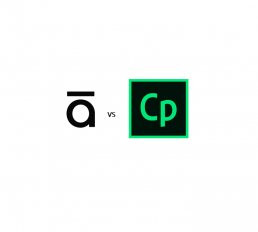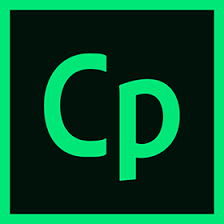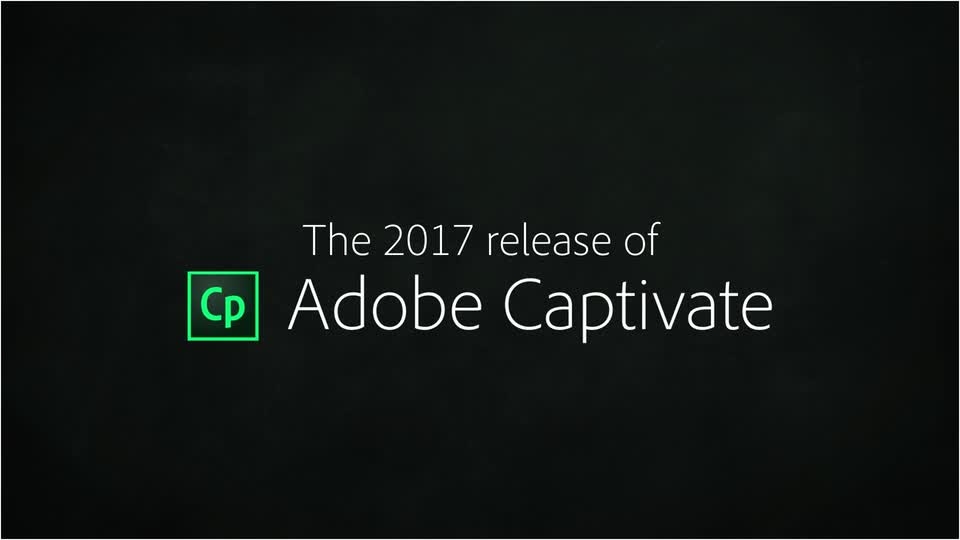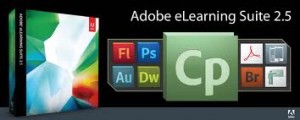Articulate Storyline or Adobe Captivate?
We often get asked ‘which authoring tool is better?’ Captivate or Storyline? We explain that both Captivate and Storyline rock. However, our sense is that if you take two equally bright people with identical skills and you gave one Storyline and one Captivate, then after a couple of days your Storyline user’s content would appear to be better. It would be the same story after a week or a month, after three months they’d maybe be neck and neck, but after six months your Captivate user would be limited only by their imagination while your Storyline user’s material would start to look ‘samey’ (which isn’t to say it is better or worse learning).
Put simply, Storyline has a much shorter learning curve and you’ll look great quickly. The flip side is that you’ll also hit its capability limit sooner and be using hardcore workarounds to extend capability when you attain mastery in a way that you would not if you had mastered Captivate.
So, both tools are great. We'd recommend either. But remember they are just tools. Having a saw and workbench doesn’t make you a carpenter. Having a rapid authoring tool will not make you an instructional designer. Enthusiastic or even reluctant amateurs can and do make brilliant material with these tools. In the modern workplace budget constraints often mean that option is all you can do. However, if you want to train thousands of people, if you have a proper training budget, if you want to concentrate on your day job rather than the technology and if you want the training to truly engage then the DIY approach is misguided. You would likely be better commissioning a professional agency such as ourselves to build your online training for you.
But back to the initial question, if we really had to pick just one, which would we go for? Our company makes eLearning for third party clients, we are doing it all day every day, and we primarily choose Storyline*.
*This is a 2019 update of an article first written in 2012. The most significant change is the very last word which originally said 'Captivate' and now says 'Storyline'. In recent years Storyline has closed the capability gap significantly. Although you do hit a limit in capability with Storyline, that limit is comfortably higher than the bar of 'very professional looking output'. We still are proud expert users of Captivate, but now use it less frequently, usually for very complex requirements. For the vast majority of projects with straightforward requirements Storyline is more than capable and the workflow more efficient.
Dan's experience of being a GuyKat Apprentice
We caught up with Dan, our Junior eLearning Designer, who started his journey with GuyKat as an apprentice.
 When did you join GuyKat?
When did you join GuyKat?
I started at the beginning of February 2016 and my apprenticeship lasted for 13 months.
What responsibilities did you have as an apprentice? What were your day-to-day tasks?
When I first started, my responsibilities were all very heavily based on graphics and imagery. I would have to create graphics in the style of a client’s branding and match this to the look and feel of the eLearning that it would be a part of. I was also responsible for finding appropriate images from stock photo websites to download and, if required, edit them too. However, as I progressed through my apprenticeship, I became much more involved with the design and, eventually, the development of the eLearning that we make. Of course, as an apprentice I was given some of the less exciting jobs such as taking out the recycling and transcribing audio, but overall there weren’t many of those kinds of tasks. During a few days of filming, I was in charge of the clapperboard and keeping track of what take we were on.
What is your current job role?
I am currently the ‘Junior eLearning Designer’ at GuyKat. I am the most junior full-time member of the eLearning team.
How have your responsibilities changed?
My responsibilities now include designing and developing eLearning, graphic design, look and feel design, development of games within eLearning, and some instructional design. My work has massively developed since being an apprentice. When I first started, I had very little knowledge of page layout design or user experience/interface, which are features that I have since developed a real understanding for over time. I have also developed more technical skills such as my ability to use Adobe programmes. When I started, I only had some experience of using Adobe Photoshop, but I’ve since built my knowledge of using Captivate, After Effects and Illustrator and I am now even more confident in those than I am in Photoshop.
What were your motivations for choosing an apprenticeship?
I never really wanted to go to university, despite it being heavily encouraged in secondary school, and especially sixth form. The appeal of having zero amount of debt outweighed the possibility of a “good job”. Nor did I want to go straight into work, just because it would have been easy to find a job that related to nothing that I’m skilled in, and stay in it. So, this is why I chose to look for an apprenticeship. Being trained, earning money, gaining a qualification and the potential of a secured job seemed like the most logical and rewarding option. I feel that an apprenticeship gave me a head start against my peers that went to university, because experience is so important to employers. I see it as an extra year of experience.
What attracted you to GuyKat?
Honestly, I knew very little about the company when I applied. It was the position itself that I was interested in. Apprenticeships that aren’t just an employer looking for cheap labour are actually difficult to come by, so I applied for apprenticeships that had a design element in the description. I knew I wanted something creative. It wasn’t until the interview that I decided I wanted to work for GuyKat. I was given the impression that they wanted me as someone who could help the company whilst being taught from scratch.
What is your proudest achievement at GuyKat?
My proudest achievement was actually quite a recent one. I was given a piece of work from a client that had a very tight deadline of one week. The project involved designing and making an assessment from scratch (with questions provided). The assessment itself was fairly straightforward to create, yet making sure the scores were reported correctly was quite complicated. Different areas required separate scores and areas of strength and weakness to be shown. Through quite a bit of trial and error, I managed to create a complex scoring system that demonstrated the user’s strengths (i.e. the areas they scored highest in) and their weaknesses (the areas they scored lowest in). I also designed a certificate that pulled the user’s scores, strengths and weaknesses from the project. I had help with the coding side of this, as this was another complicated challenge. Even though the client had multiple rounds of changes, I still managed to complete the project before the deadline, and they were very happy with the finished product. All of this took a lot of thought and time from myself, and I learnt a lot through the process and felt a great sense of achievement from it.
What do you enjoy about working at GuyKat?
The culture at GuyKat is relaxed and extremely friendly, whilst still maintaining a very high level of productivity. Right from the start of my first day I felt welcomed and supported, and like a part of the team. Even though I was an apprentice, I wasn’t made to feel that I was providing any less value.
Would you recommend the apprenticeship route?
I would absolutely recommend the apprenticeship route to anyone who doesn’t think university is for them. It is a great way to gain experience of a real working environment whilst still receiving training and support from a college/training provider. By the end of an apprenticeship, you will have valuable experience and a qualification to continue onto something else. You might choose to continue to a higher-level apprenticeship, or you may even be offered a job at the place that you carried out your apprenticeship like I was.
Our favourite ‘new and improved’ features in Adobe Captivate 2017.
Our favourite 'new and improved' features in Adobe Captivate 2017.
Adobe Captivate is the development tool of choice for the in-house eLearning production team at GuyKat. Whilst at Learning DevCamp 2017 in Salt Lake City earlier this month, our team reviewed the new features in the latest release (Adobe Captivate 2017) with other industry experts.
Our eLearning Developer, Zoe Hall, shares her favourite features of the new update:
1) Retina screen software recording
Whilst you could record a Video Demo or Software Simulation using Captivate 9, the 2017 update has resolved the need to edit the AdobeCaptivate.ini file. We have have found this improvement really useful, especially for cutting down development time and simplifying our internal processes.
2) Multi-state buttons
The ability to use buttons with multiple states (e.g. Normal, Hover, Down) on Master Slides, Quiz Slides, Quiz Results Slides and Drag and Drop Slides is an excellent update that can streamline our workflow and improve the UX throughout our projects.
3) Typekit Integration
Adobe Typekit is now integrated with Adobe Captivate. This allows developers with a Creative Cloud account to use fonts from the Typekit library within Captivate projects. Not being limited to websafe fonts for HTML5 projects now allows for consistent design across all devices. This enables us to align with the brand guidelines of our varied clients that require eLearning for multiple devices.
4) Conditional ‘While’ loop within Advanced Actions
We love the new ‘Conditional Tab’ check box within Advanced Actions, but we’re even more excited by the possibilities of the ‘While’ loop to enhance quizzing, gaming and general UX!
The ‘While’ action can be used to shorten our workflow to create simple GIF style animations within Captivate, as well as more interactive games using variables to create timers, change states and assign points.
Having taken some time to explore the ‘While’ action at Learning DevCamp, this feature will allow our team to push the boundaries to create engaging and interactive eLearning.
5) Fluid Boxes
The release of Fluid Boxes has coincided well with the rising demand for fully responsive design in our daily digital experiences - including responsive eLearning.
Captivate 2017 Fluid Boxes are a development on the previous breakpoints used in Captivate 8 and 9. Objects within Fluid Boxes align and resize automatically on different devices, creating a course that isn’t just optimised for one screen. There are many powerful, hidden tools and options within Captivate 2017 to tailor the Fluid Boxes to each developer’s needs. This higher level of flexibility and control, along with the ability to preview multiple device resolutions within Captivate, is another way that the update has reduced the development time for a responsive project and has created a better experience for the learner, regardless of the device they are using.
We are already utilising some of these features in current client projects.
If you’re looking for Adobe Captivate experts who can create bespoke eLearning, then feel free to get in touch.
Take a look at what else we got up to at Learning DevCamp 2017.
A look back at Learning DevCamp 2017
A look back at Learning DevCamp 2017
Hannah, our Lead eLearning Developer, shares her highlights from the Learning DevCamp 2017 conference.
Held in Salt Lake City, Learning DevCamp (2017) is an eLearning conference dedicated to discussing instructional design theory and authoring tools for eLearning developers across the globe.
As the Lead eLearning Developer at GuyKat Solutions, I was lucky enough to experience the conference again this year, along with my fellow eLearning Developer (and friend) Zoe Hall. Just over a week ago we set off on the 15-hour journey from Birmingham (UK) to beautiful Utah, with high expectations of a great week.
The conference is set over four days. The focus is on eLearning professionals sharing and learning best practices. Whenever I attend DevCamp, it's always refreshing to find many L&D experts challenging the way online training has to be delivered. There shall be no more boring "click and read" training! This year, there were two innovative concepts that stood out. Firstly, Augmented Reality and the possibilities it can lend to supplement training design. Secondly, bite-size training - sometimes referred to as SHOTs - to provide precise and painless training.
Learning DevCamp also boasts some great industry speakers and I thoroughly enjoyed hearing from experts such as Kevin Siegel, Jennie Ruby, Joe Ganci, Nick Floro and the founder of DevCamp, Jason Bickle (to name only a few). A highlight from our week was discovering the new features and capabilities of Adobe Captivate 2017, the authoring tool that we use in-house. Whenever software upgrades become available, we pride ourselves on taking the plunge early on.
A personal highlight for me was reconnecting with some old friends and meeting some new ones. It was great to enjoy dinner (and a spontaneous hike up the Salt Lake Hills) with some energetic and creative people from the eLearning world. There is nothing quite like a sunset in Utah.
Overall, at GuyKat we always aim to make our eLearning engaging and exciting, so attending a conference like this enables us to stay ahead of industry trends and helps us to learn more about how to improve our eLearning modules for the future. I would highly recommend this conference for anyone who is involved in the L&D industry and has the desire to learn about online training. It really is a great way to gain expertise.
Now Developing in Adobe Captivate 5.5
This week we made the upgrade to the Adobe eLearning suite 2.5. For us, the most significant component of this migration is that it updates our primary development platform from Captivate 5.0 to Captivate 5.5. For our clients the change will be invisible but not irrelevant. Some of the new functionality we gain will improve our development workflows. We gain access to more varied templates to accelerate our story-boarding process with means more time is available to invest in worrying about the all important content over and above aesthetic design.
The migration also means we shift from cleaning our sound and narration via Soundbooth to the Adobe Audition software. What does this mean? Well, a ton of stuff. But all the clients need to know is that this means our voice-overs will still be crystal clear!








